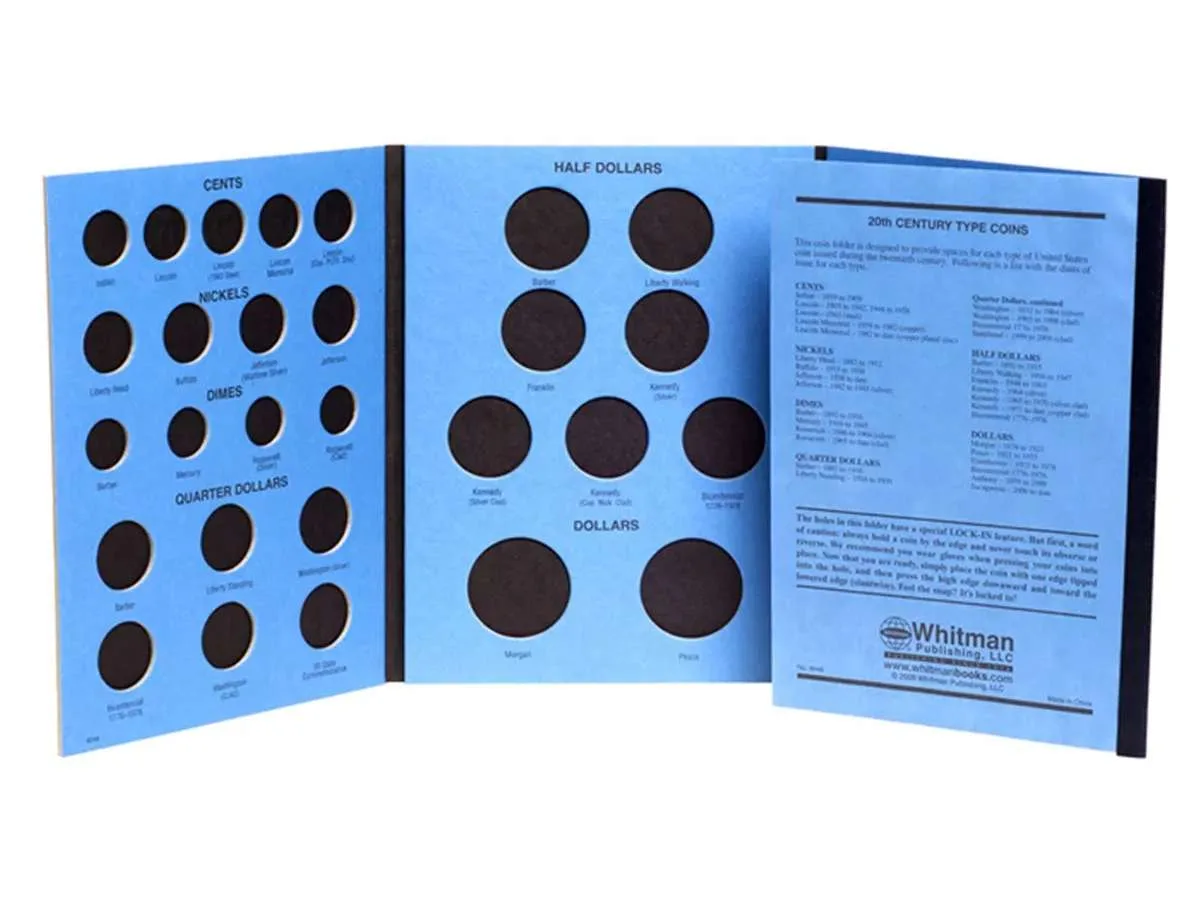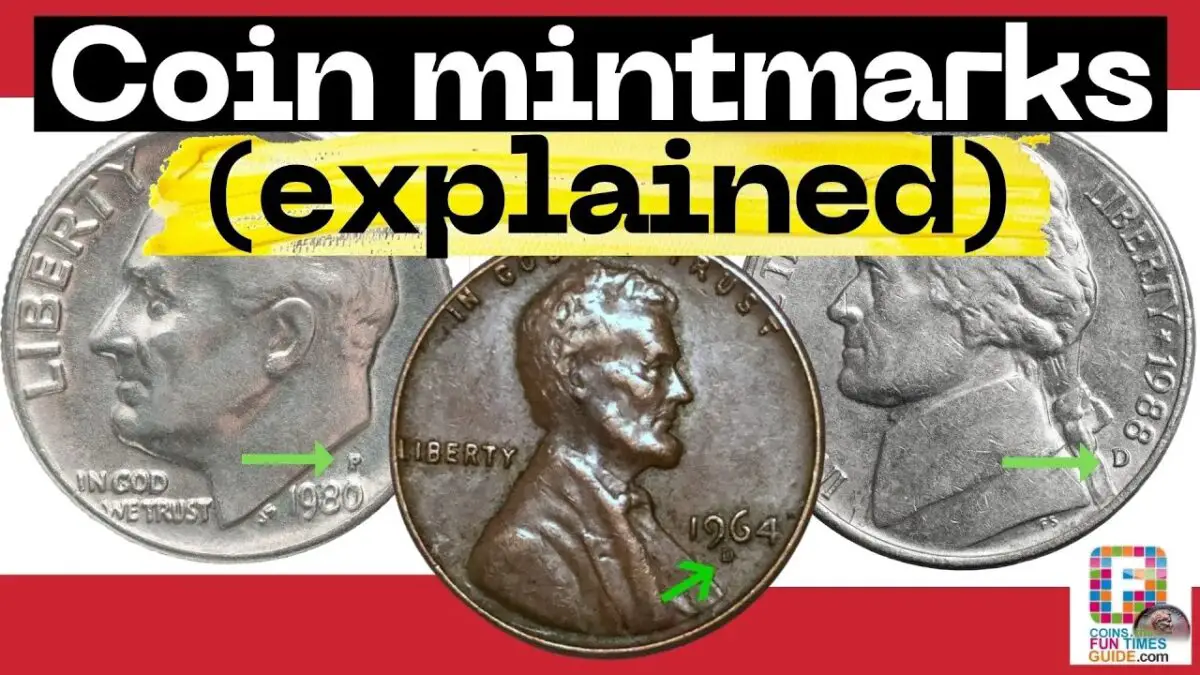You’ve probably seen (or owned) at least one of those classic blue Whitman coin folders.
You know, the ones with a picture of the coin on the front and 3 sturdy cardboard “coin boards” inside with lots of little round holes to hold your coins.
The most popular coin folder produced in the United States is the blue Whitman Coin Folder 9000 Series. In 1940, the company that had been producing coin boards started manufacturing the coin folder — which is essentially two smaller coin boards bound together. You can unfold it and lay it flat as you fill your holes, and then fold it up and stand it on a bookshelf.
~Numismatists of Wisconsin
Ways To Collect Coins Using Blue Whitman Folders
A fun and simple goal for any collector is to complete a folder!
There are 3 different strategies (3 types of people who enjoy using Whitman Folders):
- Those who know little or nothing about collecting and have at least one Whitman coin folder — say, for their Lincoln pennies collection or for their state quarters. The idea is to put the coins they find from pocket change into these coin folders to try to build a full set.
- Those who have specific criteria about what they’ll put in their Whitman folders (such as, only “shiny” pennies or “perfect” quarters) — and they might even go to coin shows or coin shops occasionally to buy the coins they haven’t been able to find on their own.
- Those who collect coins that aren’t so easy to find in circulation — such as someone with a Whitman folder for Mercury dimes who might spend $15 to $20 a week online or at the local coin shop filling up empty spaces in their coin folder.
How To Sell Completed Whitman Folders
Back in the early- to mid-twentieth century (1930s to 1960s or later), it was common for some coin shops to make certain offers regarding these Whitman coin folders — such as “Complete your Lincoln penny folder and we’ll pay you X amount for it!”
During the Great Depression of the 1930s, this was an avid hobby pursued by many Americans in the hopes of reaping the reward of a completed folder of Lincoln wheat pennies.
As far as I know, coin shops don’t really make these kinds of flat offers anymore. But they will certainly take a look at a completed coin folder and make an offer for it — IF it’s something they want.
Before you attempt to sell your completed folders to a coin dealer, here are a few guidelines:
- If your completed folder is of a CURRENT coin series, such as Lincoln memorial pennies or Washington quarters or Roosevelt dimes or half dollars after 1964… a coin dealer is not likely to take much interest in it unless all of the coins are in uncirculated condition (never spent as money and showing no wear).
- If your collection is of an EARLIER coin series, such as Indian Head pennies or wheat pennies or pre-1965 dimes, pre-1965 quarters… coin dealers will definitely take an interested look regardless of the condition of the coins inside. (They will obviously pay more for higher condition coins.)
- Coin dealers especially like it if all the coins in your folder are in SIMILAR CONDITION. Serious collectors generally think a folder is less desirable if half the coins are well-worn and the others are perfect.
Remember, it makes the most sense to fill Whitman coin folders with coins that are in similar condition AND to collect an older coin series — if you can afford to.
But… you need to be true to yourself and collect something you like! If you think Washington quarters are ugly, then don’t collect them.
A Few Things You Shouldn’t Do…
Here are a few final notes about which coins you should (and shouldn’t) put in your Whitman coin folders:
- It’s usually NOT a good idea to take expensive ($50+), high-grade coins out of their holders to put in your Whitman coin folders. Valuable coins are best preserved in their sealed (or semi-sealed) coin holders (or coin flips).
- You definitely DON’T want to take coins out of sealed plastic (or mylar) holders that have been graded by a professional grading company! Much of their value is in the authenticity that the sealed holder itself provides.
- DON’T put your coins into folders with your fingers. The oils and other debris on your fingers can lead to distracting and unsightly blemishes on your coins over time. A finger will do in a pinch — but you should only handle coins by their edges, and push them into the coin holder using a small piece of cloth instead of your fingers.
As you can see those little blue folders are more interesting than they might seem at first. In fact, old Whitman coin folders themselves are quite collectible.
Have fun collecting… I will be back soon with an examination of just how much those completed folders might be worth!





